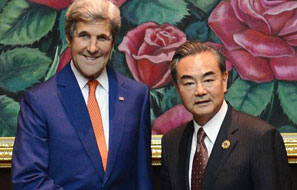https://youtu.be/Enj0F4ey1Hs
KUALA LUMPUR: A 43-year-old moneylender was killed after he was shot at some 16 times near Setapak Central here.
The father of three, who was on his way to meet a relative nearby, was driving alone near a mall when four men on two motorcycles approached his car at 3.55pm yesterday.
“They came when the victim’s car was at the traffic lights. One shooter went to the left and another to the right before both opened fire,” City CID chief Senior Asst Comm Rusdi Mohd Isa told a press conference at the Setapak police station yesterday.
SAC Rusdi said that the shooter on the right fired about three to four shots whereas the other fired twelve and the four men fled shortly after.
“Family members of the victim have confirmed his identity,” said SAC Rusdi, adding that the police would withhold his identity from the press for now.
On whether the shooting might have been gang-related, he said that there is a possibility.
“We have early information on his background of being involved in gangs,” said SAC Rusdi.
A post-mortem would be conducted, he said.
Wangsa Maju OCPD Supt Mohamad Roy Suhaimi Sarif asked members of the public who were present at the time of the shooting to come forward to relay any information they might have on the murder.
A video of what appears to be CCTV footage, which depicts the above chain of events, has been circulating on social media. - The Star/Asia News Network
Moneylender executed at traffic light
KUALA LUMPUR: A 43-year-old man was killed in a hail of bullets after two gunmen opened fire at a traffic light intersection near the KL Festival City Mall at Setapak Sentral in yet another killing involving firearms in the Klang Valley.
The victim, who was a moneylender and suffered at least 10 gunshots, was driving alone in a heavily-tinted Honda Accord when he was attacked at 3.35pm.
He had stopped at the traffic lights and was on his way to have a drink at the mall nearby when four men on two motorcycles arrived seconds later and pulled over next to his car.
Police said the pillion riders, both who were armed with pistols, got off the motorbikes before each of them went up to the driver's and the front passenger's sides and opened fire, killing the victim on the spot.
The gunmen who are believed to be hired killers fled with their accomplices soon after and investigators believe the attack is linked to a turf war between underworld gangs.
Kuala Lumpur police chief Commissioner Datuk Amar Singh Ishar Singh said based on the spent 9mm bullet casings found at the scene, the gunmen fired 18 gunshots.
He said investigators have a street close-circuit camera recording which showed the attack taking place.
Police are also checking if the case is linked to another murder case in Jinjang in January where a 41-year-old contractor died of three gunshot wounds to his face and chest during a meeting with two men near a factory.
Meanwhile, a family member of the victim who was interviewed by theSun said the man had been in hiding for several months because he knew that he was wanted by underworld members and that his life was in danger.
The family member, who declined to be identified, said he heard about the news of the shooting when the viral picture of the victim was sent to him via WhatsApp from a friend.
"At first I did not believe that the victim was my relative, he had shaved his head, probably because he's been in hiding," he said.
He said the victim had been involved in underworld activities since he was 25.
By Charles Ramendran and Aiezat Fadzell newsdesk@thesundaily.com
IGP: Setapak killers still in the country
By By Justin Zack The Star/Asia News Network
KUALA LUMPUR: The suspects in Wednesday’s fatal shooting at Setapak are still in Malaysia, according to the Inspector-General of Police.
“We believe that they still are here,” said Tan Sri Khalid Abu Bakar when met by the media after launching KPD Mart Community at Kolej Unikop here yesterday.
On whether the latest shooting pointed to a trend of using hired killers, Khalid said the police did not see it as such.
“We don’t see this as a trend of (using) hired killers but I do not deny that we have these cases.
 “These are not random shootings. All these cases had a reason behind the shootings, including the latest shooting,” he said.
“These are not random shootings. All these cases had a reason behind the shootings, including the latest shooting,” he said.Police, Khalid added, would be taking more steps to “minimise” such incidents.
kanna setapak shooting victim While no arrests have been made yet, the police assure the public that the force “will hunt them down” and that the suspects “cannot run”.
Moneylender V. Kandasamy (pic), 43, was shot dead at a traffic light near Setapak Central when four men on two motorcycles fired a total of 16 shots at him while he was still in his car.
City police chief Comm Datuk Amar Singh, when contacted yesterday, confirmed that the victim was a member of the “Satu Hati” gang.
Related:




















